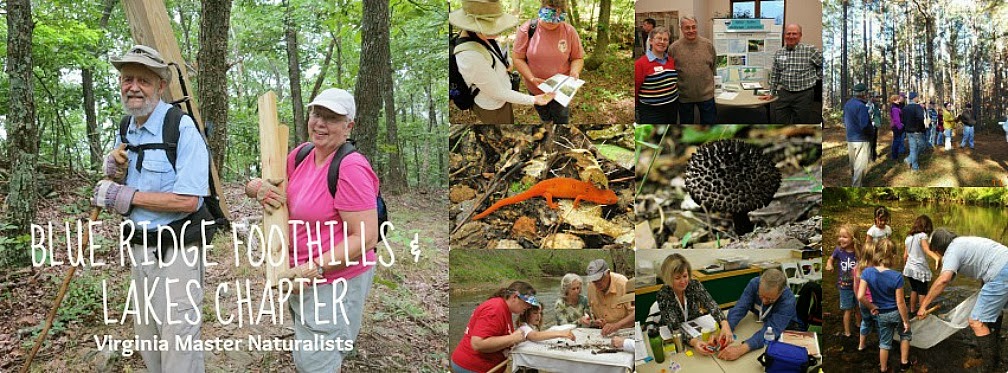USA National Phenology Network is looking for a few good men and women
Nolan Doesken from CoCoRaHS said "By the way, if you enjoy observing vegetation and when things bud and bloom, I encourage you to visit the National Phenology Network website: http://www.usanpn.org/ They would appreciate more volunteers to help in their mission."
 |
| BRFAL Chapter observing nature |
The following info from USA National Phenology Network
The USA National Phenology Network brings together citizen scientists, government agencies, non-profit groups, educators and students of all ages to monitor the impacts of climate change on plants and animals in the United States. The network harnesses the power of people and the Internet to collect and share information, providing researchers with far more data than they could collect alone.
What is Phenology?
Phenology refers to recurring plant and animal life cycle stages, or phenophases, such as leafing and flowering, maturation of agricultural plants, emergence of insects, and migration of birds. It is also the study of these recurring plant and animal life cycle stages, especially their timing and relationships with weather and climate.
Why Is It Important?
Phenology, put another way, is simply nature’s calendar—when the cherry trees bloom, the robin builds its nest, and the leaves turn color in the fall. This schedule is critical for plants and animals, and people too. When a caterpillar emerges, it needs developing leaves to eat. When a chick hatches, it needs caterpillars and other food to eat. For many people, allergy season starts when particular flowers bloom—earlier flowering means earlier allergies. Farmers and gardeners need to know when to plant to avoid frosts, and they need to know the schedule of plant and insect development to decide when to apply fertilizers and pesticides. In fact, phenology affects nearly all aspects of the environment, including the abundance and diversity of organisms, their interactions with one another, their functions in food webs, and their seasonal behavior, and global-scale cycles of water, carbon, and other chemical elements.
The timing of phenological events is important for:
- Health (allergens and infectious diseases)
- Recreation (wildflower displays and fall colors)
- Agriculture (planting and harvest times, pest control)
- Management of natural resources (water and timber)
- Understanding hazards (monitoring and prediction of drought and fire risk)
- Conservation (abundance and diversity of plants and animals)

Phenology plays an important role in human culture, as well. Festivals around the world celebrate annual phenological events from whale migrations to cherry blossoms. Explore our interactivemap or list of festivals. If you know of a phenology festival that's not listed, you can add a new one (you have to be logged on to our website, first).
How Does It Relate to Climate Change?
Phenology records can help us understand plant and animal responses to climate change. Changes in phenological events like flowering and bird migrations are among the most sensitive biological responses to climate change. Across the world, many spring events are occurring earlier—and fall events are happening later—than they did in the past. However, not all species are changing at the same rate. The phenology of some species is changing quickly, while for others it is changing slowly or not at all. These different shifts in timing are shaking up ecosystems and altering interactions and processes that took place in the past. Our program will help scientists and managers identify which species are changing, and how, so that we can better predict the impact of changing phenologies on natural systems and people. View Climate Change & Citizen Science video.
Why Observe Phenology?
We know a lot about phenology, but there is still a lot to learn. Scientists still need information to answer lots of questions, ranging from simple questions like “What regulates the pace at which a particular species grows and develops?” to more complex questions like “How does phenology affect which organisms live in a particular place? Or, how does phenology affect the cycling of water, energy, and chemical elements in the environment, and how are changing climates likely to affect these relationships?” With sufficient phenological observations, we can document patterns of phenology for critical plant and animal species across the United States, and then use this information to build models to help humans understand and adapt to changing landscapes and climates.
Despite their importance, broadly distributed phenological data are relatively rare in the United States, though other countries have well-developed data sets and phenology monitoring programs.
Who Observes Phenology?
 Anyone can participate in our phenology observation program, Nature's Notebook, by registering and entering their observations online.
Anyone can participate in our phenology observation program, Nature's Notebook, by registering and entering their observations online. Examples of some of our participants include:
- Gardeners observing single plants in their backyards in Maryland
- Entire classrooms of high school students tracking flowers in Arizona
- Professional scientists monitoring long-term research plots in pristine natural environments in Wyoming
- Farmers tracking the timing of wheat production in the Midwest
- Land managers with the U.S. National Park Service and U.S. Fish and Wildlife Service tracking phenology of plants and animals in parks and refuges
- Boys and Girls clubs building and monitoring phenology gardens in California
- NOAA National Weather Service cooperative observers monitoring lilac bushes as part of an on-going 50-year project
Many famous historical figures, including Thomas Jefferson, Aldo Leopold, and Henry David Thoreau, recorded phenology observations that are being resurrected and used to understand how environmental conditions have changed across the U.S. over the last century or more.
Search Plants & Animals to Observe - click here
Article shared via BRFAL Chapter of Virginia Master Naturalist wants you get outside make some observations!

No comments:
Post a Comment
Thanks for your comment and interest! NOW GO OUTSIDE!